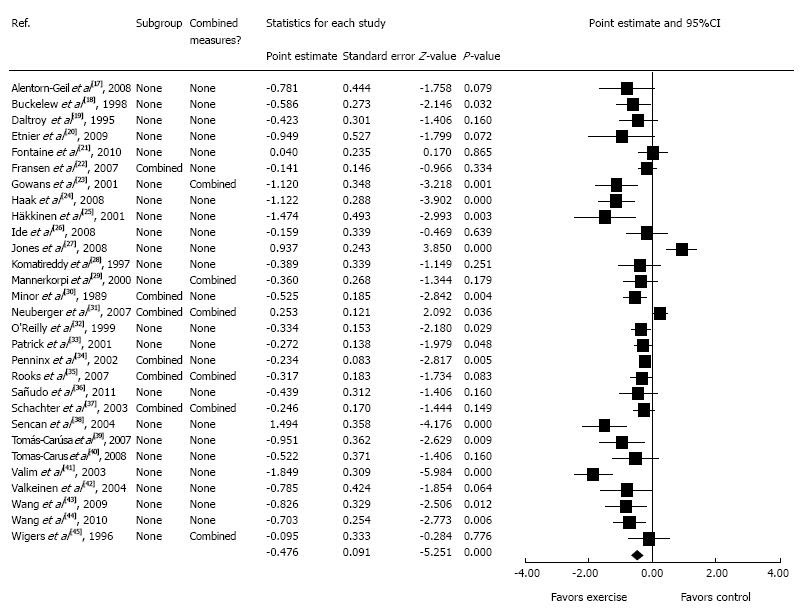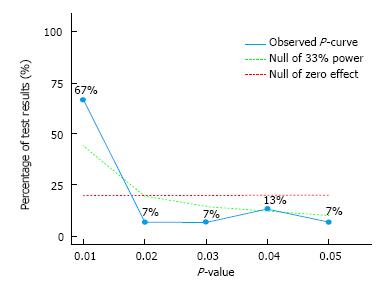Copyright
©The Author(s) 2016.
World J Rheumatol. Jul 12, 2016; 6(2): 23-29
Published online Jul 12, 2016. doi: 10.5499/wjr.v6.i2.23
Published online Jul 12, 2016. doi: 10.5499/wjr.v6.i2.23
Figure 1 Forest plot for changes in depressive symptoms.
The black squares represent the mean difference while the left and right extremes of the squares represent the corresponding 95%CIs. The middle of the black diamond represents the overall mean difference while the left and right extremes of the diamond represent the corresponding 95%CIs.
Figure 2 P-curve results for evidential value.
Results are significantly right-skewed (P < 0.0001), suggesting that evidential value exists that exercise reduces depressive symptoms in adults with arthritis and other rheumatic diseases. The graphed results include 15 statistically significant P-values < 0.05. Fourteen additional results were entered but excluded from the analysis because of non-significance (P > 0.05).
Figure 3 Diagnostic plot for power estimation.
This figure illustrates how close the expected P-curve is to the observed P-curve for each level of power between 5% and 99%. The Y-axis is the perfect fit distance for each level of power. The estimated power for exercise-induced changes in depressive symptoms data is 69%. The solid red circle is generally lower than the other markers, suggesting that the power estimate is a better fit than the alternatives. The flatter the curve, the less confidence in the power estimate. Alternatively, a V-shape suggests an ideal estimate of power.
- Citation: Kelley GA, Kelley KS. Exercise reduces depressive symptoms in adults with arthritis: Evidential value. World J Rheumatol 2016; 6(2): 23-29
- URL: https://www.wjgnet.com/2220-3214/full/v6/i2/23.htm
- DOI: https://dx.doi.org/10.5499/wjr.v6.i2.23











